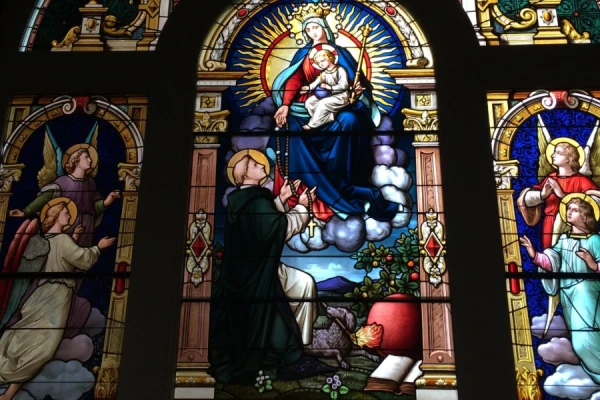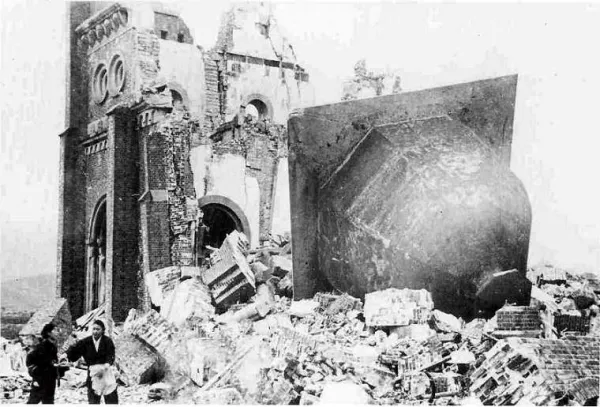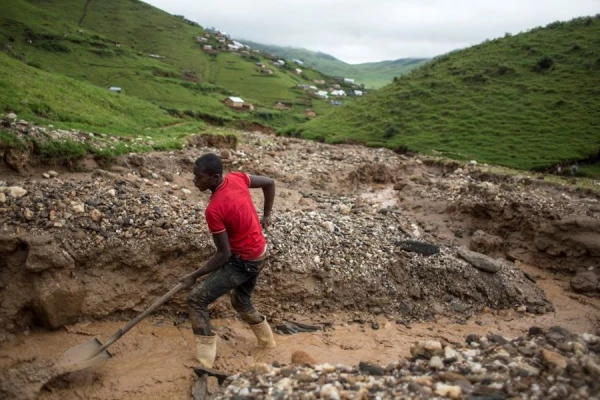
Bologna, Italy, Aug 8, 2019 / 10:03 am (CNA).- The first image to greet visitors to the basilica containing the tomb of St. Dominic in Bologna, Italy is a mosaic of the saint next to a dog carrying a flaming torch in its mouth.
This is not a depiction of a pyromaniacal game of fetch, but a reference to a dream which foretold the 13th-century preacher’s mission in the world — to be the bearer of Divine fire across Europe, illuminating the darkness of heresy and sin with truth and charity.
“When St. Dominic’s mother, Blessed Jane of Aza, was pregnant, she had a dream of a dog with a torch in its mouth, running around the world and setting everything on fire. She went to the monastery of Santo Domingo de Silos and asked a monk what it meant. He replied that the child in her womb would be a great preacher, who would set the world ablaze with the fire of his words,” Dominican Fr. Ezra Sullivan, lecturer at the Angelicum University in Rome, told CNA.
“In fact, the word ‘Dominican’ is a play on the Latin, Domini canes, which means ‘dogs of the Lord,” Fr. Thomas Petri, dean of the Dominican House of Studies in Washington DC, explained.
Throughout history St. Dominic has been depicted in paintings and statues standing beside a canine companion.
“One source recounts that the dog Blessed Jane saw in her vision was a greyhound. That seems right to me,” Petri said. “St. Dominic should be associated with breeds that are fast and useful for herding.”
“Imitating Christ himself, St. Dominic is a hound nipping at your heels to bring you to God,” he added.
“In the early thirteenth century, the Church was experiencing increasing devotion among the lay faithful that was unmatched by the clergy. At a time when bishops, priests, and monks were living extravagantly and rarely preaching, St. Dominic came to see that the Church needed priests who lived in poverty but who were also preachers of grace and truth, especially in the face of heretical cults that were leaching the faithful away from the Church of Jesus Christ,” Petri explained.
St. Dominic Guzman was born in Caleruega, Spain on Aug. 8, 1170. Throughout his life, he is said to have converted some 100,000 people through his preaching missions. He spread the devotion to the rosary, and played a key role in doctrinal debates combating the Albigensian heresy, a revival of Manichaeism, which had taken hold in southern France.
Dominic founded the Order of Preachers – the Dominicans – in France in 1216, adapting the Rule of St. Augustine in obedience to the pope, with an emphasis on study and community life in poverty. He died in Bologna, Italy after several weeks of illness on Aug. 6, 1221.
Benedict XVI said in Feb. 2010 that St. Dominic “reminds us that in the heart of the Church, a missionary fire must always burn.”
“Saint Dominic was given the grace not only to have a fervent zeal and love for Jesus Christ, especially Christ crucified, but also the wisdom to preach the Gospel with force and conviction,” Petri said.
Fr. Sullivan noted: “It was also said that ‘he always spoke either about God or to God,’ and therefore his words were like fiery darts that always hit their targets.”
St. Catherine of Siena, a third order Dominican, is frequently quoted as saying, “Be who God meant you to be and you will set the world on fire.”
However, Fr. Petri explained that a more accurate translation of what St. Catherine wrote in a letter in her dying days is, “If you are what you ought to be, you will set fire to all Italy, and not only there.”
She wrote this to her follower Stefano Maconi because she was “concerned that he was tepid in his devotion and pleaded with him to go to Rome to light the fire of Divine charity there amid the turmoil of schism and infidelity the city was experiencing,” Petri said.
St. Catherine of Siena spoke of cultivating the ‘Divine fire’ as “cultivating the charity of God in one’s soul,” he explained.
“The way we cultivate charity is by committing ourselves to be with Christ in prayer, in study, at work, in the home, and at every other moment in our day,” he said.
“Most especially, however, such communion with Christ is nourished and strengthened by receiving the Sacrament of Charity—the Holy Eucharist—in which the One who is Charity itself comes into us and lights our souls aflame in love for him and for our neighbor.”
 […]
[…]








